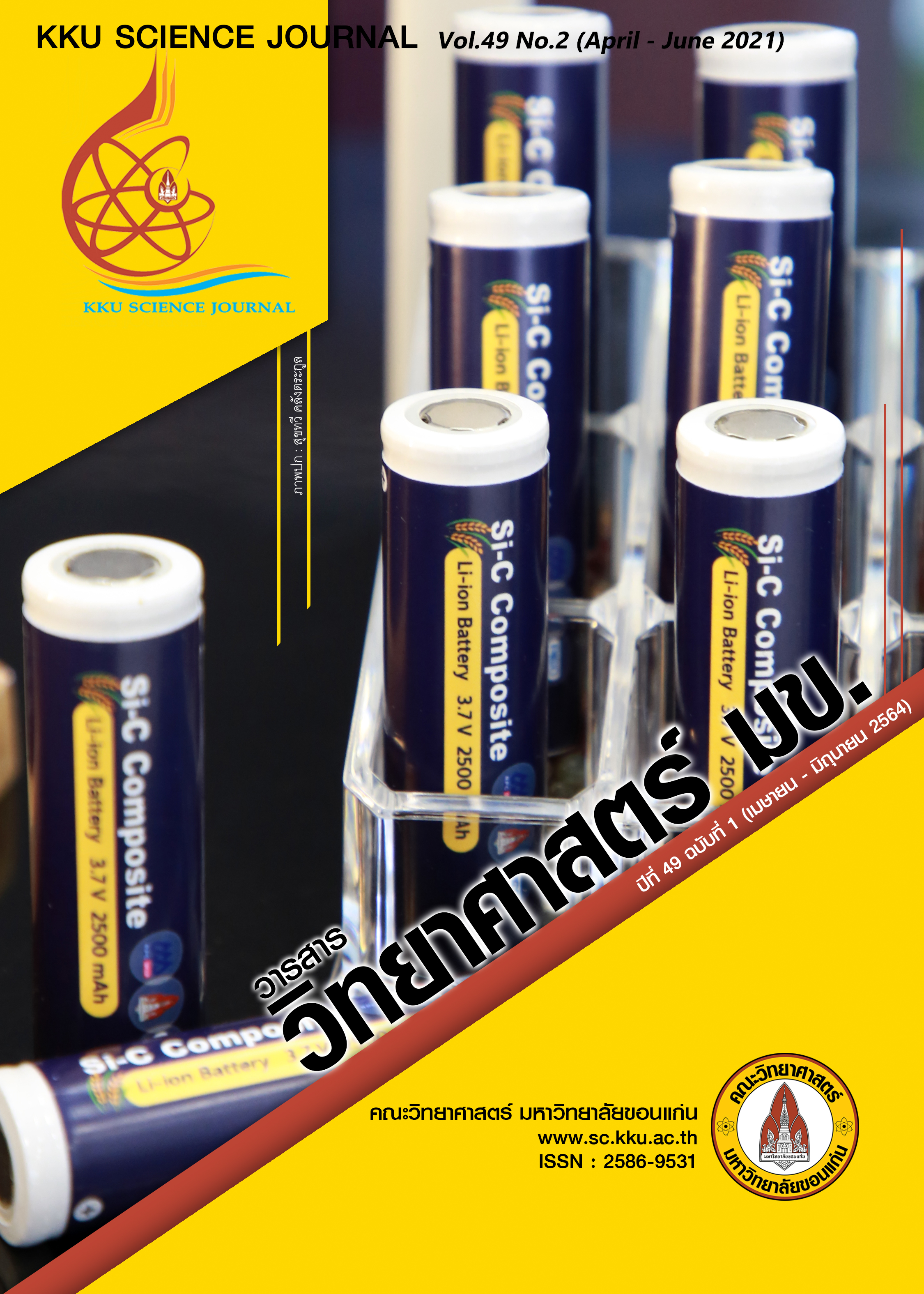Light Curve Analysis of All-Sky Automated Survey for Supernovae Data on a Sample of W Ursae Majoris Eclipsing Binary Stars in the Constellation Ursa Minor
Main Article Content
Abstract
In This research, I study fifty W Ursae Majoris eclipsing binaries of constellation Ursa Minor from a sample of the ASAS-SN Catalog of Variable Stars. The light curve with PHOEBE program based on the Wilson–Devinney algorithm was used. The results show that the fifty systems are the A-subtype of W Ursae Majoris eclipsing binary. I found the mass ratio of all systems less than 1. The primary component of all systems is the massive one. The light curve of AT UMi binary displays the effective temperature of secondary component more than primary component. The secondary components of all systems have radii larger than ZAMS evolutionary of about the same mass. The all of stars sample are the main sequence stars. The cool spots appear on the secondary component of the AP UMi and the RZ UMi binary. The degree of contact, the phase shift and the orbital inclination of all systems are corresponding to the geometric structure modeling.
Article Details

This work is licensed under a Creative Commons Attribution-NonCommercial-NoDerivatives 4.0 International License.
References
Adams, W. S. and Joy, A. H. (1919). The motions in space of some stars of high radial velocity. Proceedings of the national academy of sciences of the United States of America, 5(7): 239-241.
Awadalla, N. S., Hanna, M. A., Ismail, M. N., Hassan, I. A. and Elkhamisy, M. A. (2016). New CCD observations and the firt photometric study of the contact binary AP UMi. Journal of The Korean Astronomical Society 49(3): 65-71.
Binnendijk, L. (1970). The orbital elements of W Ursae Majoris systems. Vistas in Astronomy 12(1):217-256.
Bradstreet, D. H., and Steelman, D. P. (2004). BINARY MAKER 3, Contact Software (http://www.binarymaker.com).
Dale, H. A. and Sgro L. A. (2015). A photometric study of the misclassified variable AK Ursae Minoris. Journal of the American Association of Variable Star Observers 43(2): 115-117.
Flower, P. J. (1996). Transformations from theoretical Hertzsprung-Russell diagrams to color-magnitude diagrams: effective temperatures, B-V colors, and bolometric corrections. Astrophysical Journal 469(1): 355-365.
Gaia Collaboration, Brown, A. G. A., Vallenari, A., Prusti, T., de Bruijne J. H. J., Babusiaux, C. A. L. and Bailer-Jones, C. (2018). Gaia data release 2. Summary of the contents and survey properties. Astronomy and Astrophysics 616(A1): 1-21.
Harmanec, P. (1988). Stellar masses and radii based on modern binary data. Bulletin of the Astronomical Institutes of Czechoslovakia 39(6): 329-345.
Jayasinghe, T., Stanek, K. Z., Kochanek, C. S., Shappee, B. J., Holoien, T. W. S., Thompson, T. A., Prieto J. L., et al. (2018). The ASAS-SN catalog of variable stars II: uniform classification of 412,000 known variables. Monthly Notices of the Royal Astronomical Society 489(2): 1907-1943.
Jayasinghe, T., Stanek, K. Z., Kochanek, C. S., Vallely, P. J., Shappee, B. J., Holoien, T. W. S., Thompson T. A., et al. (2020). The ASAS-SN catalog of variable stars VI: an all-sky sample of 𝛿 Scuti stars. Monthly Notices of the Royal Astronomical Society 493(3): 4186-4208.
Lucy, L. B. (1967). Gravity-darkening for stars with convective envelopes. Zeitschrift für Astrophysik 65(1): 89-92.
Malatesta, K. (2021). W Ursae Majoris. The American Association of Variable Star Observers (AAVSO), แหล่งข้อมูล: https://www.aavso.org/vsots_wuma. ค้นเมื่อวันที่ 25 มีนาคม 2564.
Müller, G. and Kempf, P. (1903). A new variable star of unusually short period. Astrophysical Journal 17(1): 201-211.
O’Connell, D. J. K. (1951). The so-called periastron effect in close eclipsing binaries. Riverview College Observatory Publications 2(6): 85-99.
Prša, A. and Zwitter, T. (2005). A computational guide to physics of eclipsing binaries. I. Demonstrations and perspectives. Astrophysical Journal 628(1), 426-438.
Rucin ski, S. M. (1969). The proximity effects in close binary systems. II. The bolometric reflection effect for stars with deep convective envelopes. Acta Astronomica 19(4): 245-255.
Tout, C. A., Pols, O. R., Eggleton, P. P. and Han, Z. (1996). Zero-age main-sequence radii and luminosities as analytic functions of mass and metallicity. Monthly Notices of the Royal Astronomical Society 281: 257-262.
Van Hamme, W. (1993). New Limb-darkening coefficients for modeling binary star light curves. Astronomical Journal 106(5): 2096-2117.
Wilson, R. E. and Devinney, E. J. (1971). Realization of accurate close-binary light curves: application to MR Cygni. Astrophysical Journal 166(3), 605-619.


